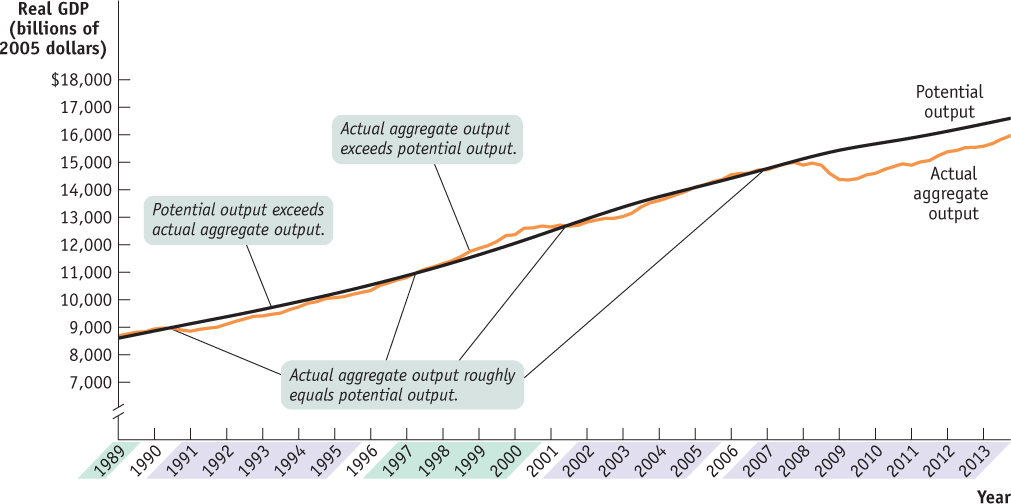Economic Growth in Macroeconomic Models

Jetta Productions/Getty Images
40Economic Growth in Macroeconomic Models
In this Module, you will learn to:
• Explain how long-run economic growth is represented in macroeconomic models
• Model the effects of economic growth policies
Long-run economic growth is fundamental to solving many of today’s most pressing economic problems. It is even more critical in poorer, less developed countries. But the policies we have studied in earlier sections to address short-run fluctuations and the business cycle may not encourage long-run economic growth. For example, an increase in household consumption can help an economy to recover from a recession. However, when households increase consumption, they decrease their savings, which leads to decreased investment spending and slows long-run economic growth.
In addition to understanding short-run stabilization policies, we need to understand the factors that influence economic growth and how choices by governments and individuals can promote or retard that growth in the long-run.
Long-run economic growth is the sustained rise in the quantity of goods and services the economy produces, as opposed to the short-run ups and downs of the business cycle. In Module 18, we looked at actual and potential output in the United States from 1989 to 2013. As shown in Figure 40.1, increases in potential output during that time represent long-run economic growth in the economy. The fluctuations of actual output compared to potential output are the result of the business cycle.
| Figure 40.1 | Actual and Potential Output from 1989 to 2013 |

Figure 40.1: Actual and Potential Output from 1989 to 2013This Figure shows the performance of actual and potential output in the United States from 1989 to 2013. The black line shows estimates, produced by the Congressional Budget Office, of U.S. potential output. The blue line shows actual aggregate output. The purple-shaded years are periods in which actual aggregate output fell below potential output, and the green-shaded years are periods in which actual aggregate output exceeded potential output. As shown, significant shortfalls occurred in the recessions of the early 1990s and after 2000. Actual aggregate output was significantly above potential output in the boom of the late 1990s.
Sources: Congressional Budget Office, Bureau of Economic Analysis.
As we have seen throughout this section, long-run economic growth depends almost entirely on rising productivity. Good macroeconomic policy strives to foster increases in productivity, which in turn leads to long-run economic growth. In this module, we will learn how to evaluate the effects of long-run growth policies using the production possibilities curve and the aggregate demand and supply model.
AP® Exam Tip
The AP® exam has included questions on how to show economic growth on a graph. You should be able to draw a correctly labeled PPC and show economic growth with an outward shift.

